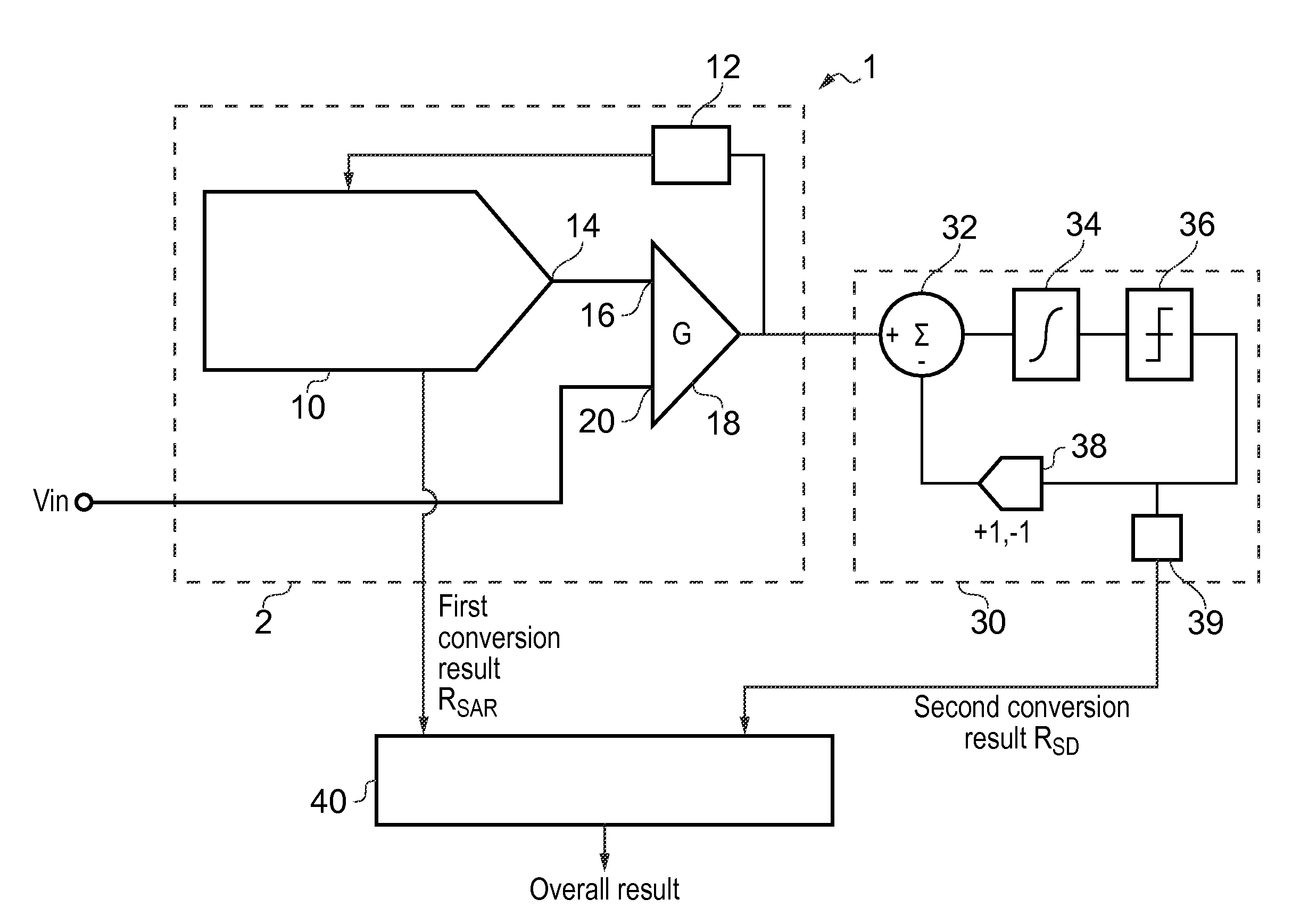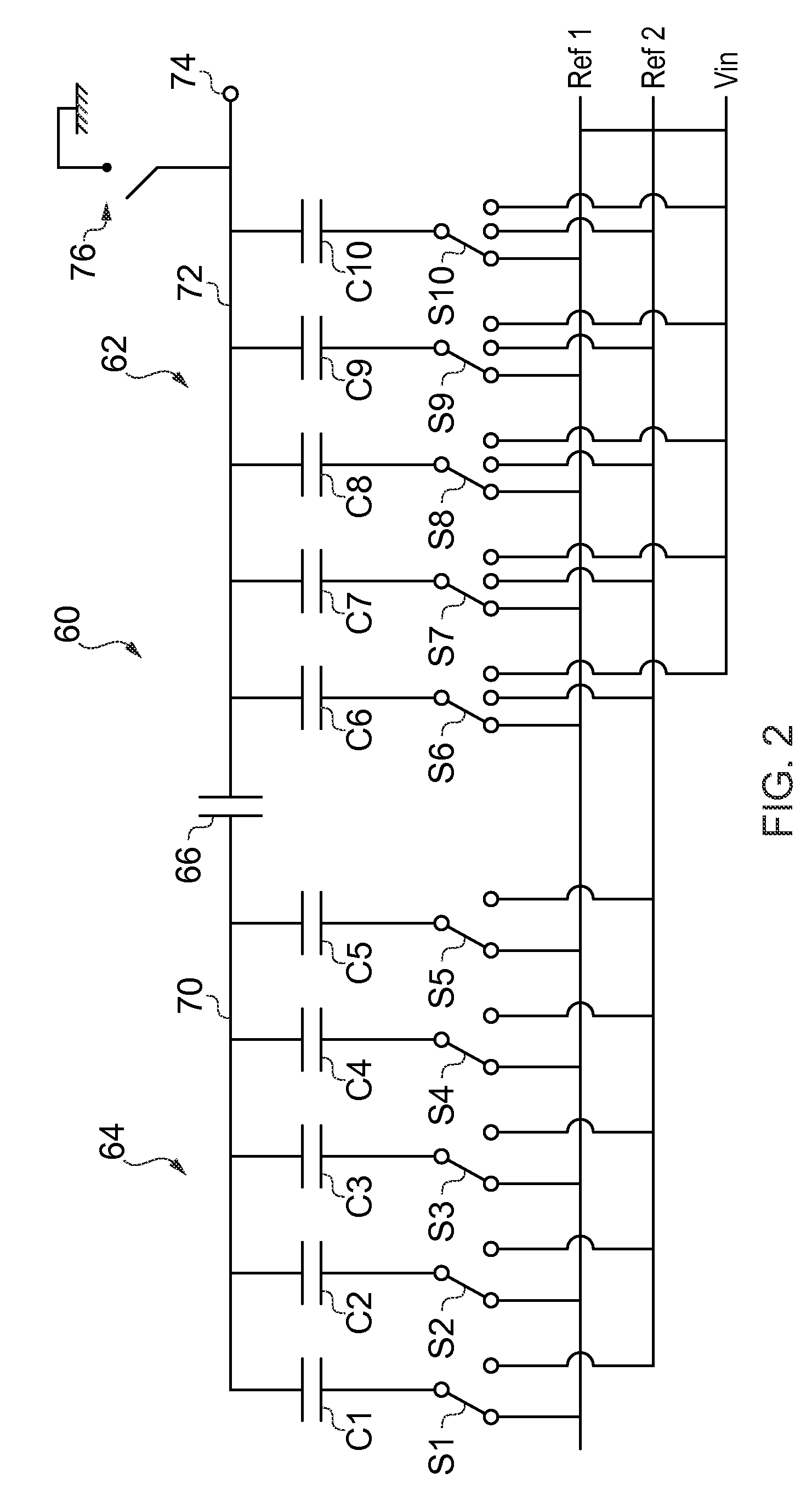Apparatus for and method of performing an analog to digital conversion
apparatus technology, applied in the field of apparatus for and method of performing an can solve the problems of thermal noise source, adversely affecting the decision-making process of analog to digital converter, and the noise of the converter may be received on the power and/or voltage reference line, so as to improve the noise performance of the sigma-delta converter, the effect of fast conversion and easy realization
- Summary
- Abstract
- Description
- Claims
- Application Information
AI Technical Summary
Benefits of technology
Problems solved by technology
Method used
Image
Examples
first embodiment
[0034]FIG. 1 schematically illustrates the invention. The analog to digital converter 1 of FIG. 1 comprises a successive approximation converter 2 which receives an input signal Vin and performs a first conversion which in the context of the overall operation of the analog to digital converter 1 can be regarded as finding the more significant bits of the conversion result.
[0035]The SAR converter 2 need not be limited to any specific SAR technology, although as will be described later switched capacitor arrays are advantageous.
[0036]The SAR converter 2 may be considered as comprising a digital to analog converter 10 responsive to a controller 12. An output 14 of the digital to analog converter 10 is provided to a first input 16 of a differential amplifier 18. A second input 20 of the amplifier 18 receives the signal that is to be converted, Vin. Advantageously Vin has been captured by a sample and hold circuit (not shown). In use the controller 12 commences the SAR algorithm by setti...
second embodiment
[0064]In the invention, the capacitor switching arrangement for a single bit sigma delta would result in the integrator input voltage, for a particular conversion, normally switching between just 2 voltage levels. While this can be achieved with more than one capacitor, in its most simple arrangement, a single capacitor is switched to one reference level when the comparator returns a logic 1 and to a different reference voltage when the comparator returns a logic 0.
[0065]In an alternative approach avoiding the formation of a “negative” weight at the least significant bit level the controller 12 can increment or decrement the entire word on the capacitor sub-array. This also works, but as the capacitors are real components may give rise to undesirable transients at the node 74.
[0066]The very nature of the segmented array gives rise to C1 being relatively large in real terms compared to its size in the bit trials. Switching of C1 in the sigma-delta trial can cause ringing or transient...
PUM
 Login to View More
Login to View More Abstract
Description
Claims
Application Information
 Login to View More
Login to View More - R&D
- Intellectual Property
- Life Sciences
- Materials
- Tech Scout
- Unparalleled Data Quality
- Higher Quality Content
- 60% Fewer Hallucinations
Browse by: Latest US Patents, China's latest patents, Technical Efficacy Thesaurus, Application Domain, Technology Topic, Popular Technical Reports.
© 2025 PatSnap. All rights reserved.Legal|Privacy policy|Modern Slavery Act Transparency Statement|Sitemap|About US| Contact US: help@patsnap.com



